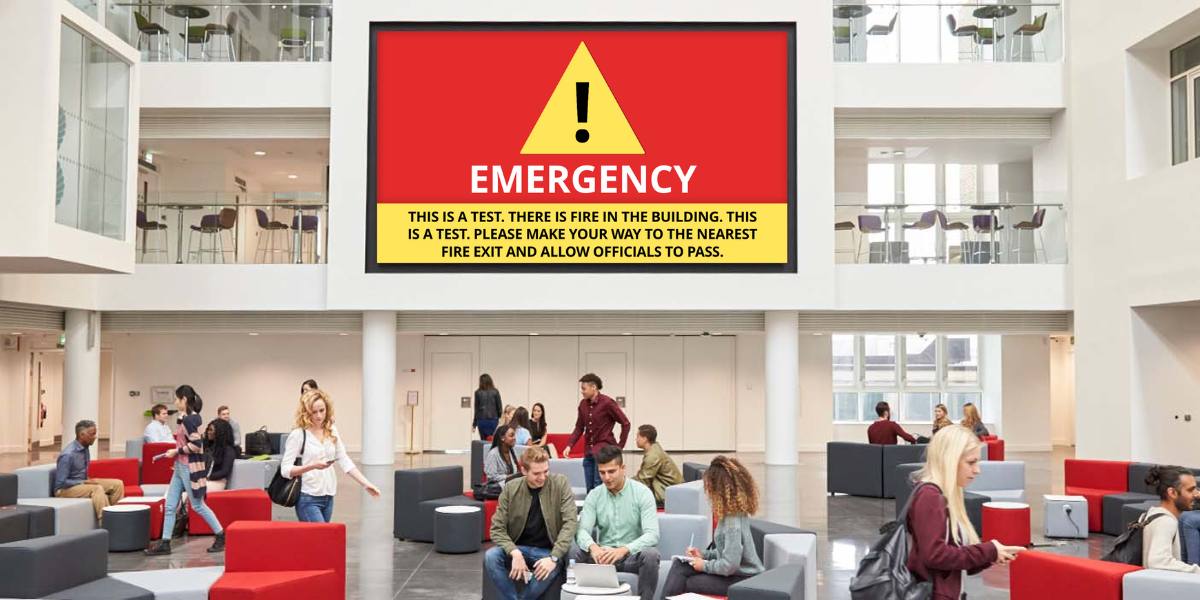Trends
Embracing Eco-Friendly Digital Signage in the Classroom

Digital signage is emerging as a standout addition to educational settings, celebrated for its flexibility and dynamism. This technology enhances communication, boosts student engagement, and enriches learning experiences. Yet, as environmental awareness grows, it's essential for educational institutions to embrace digital signage in a manner that is both sustainable and environmentally responsible. In this blog post, we will discuss effective strategies for integrating digital signage into schools with an emphasis on sustainability.
TLDR Key Takeaways
TLDR Key Takeaways
1. Choosing Energy-Efficient Displays
The first step towards sustainable digital signage is selecting energy-efficient screens. Opt for LED displays which consume significantly less power compared to traditional LCD screens. LEDs not only reduce energy usage but also offer better durability and require less maintenance over time. Additionally, look for products with energy-saving certifications like ENERGY STAR, which meet strict energy efficiency guidelines set by the U.S. Environmental Protection Agency.
2. Utilizing Timers and Power Management Settings
To minimize energy consumption, use timers to ensure that digital signs are only operational during school hours or specific times when viewership is guaranteed. Modern digital signage solutions come with built-in power management settings that allow the screens to enter a low-power standby mode when not in active use. By managing operational hours, schools can significantly cut down on unnecessary power usage.
3. Incorporating Renewable Energy Sources
For schools that are truly committed to sustainability, powering digital signage with renewable energy sources, such as solar or wind power, is a game-changer. This approach not only reduces reliance on fossil fuels but also sets a powerful example for students about the importance of sustainable energy practices. Some institutions might consider installing solar panels specifically dedicated to their digital signage systems.
4. Opting for Cloud-Based Digital Signage Software
Cloud-based digital signage software reduces the need for physical servers within the school, which typically consume a lot of power and require air conditioning to prevent overheating. By hosting digital signage content on the cloud, schools can also enhance the flexibility of content management and reduce hardware waste.
5. Implementing Recyclable and Eco-Friendly Materials
When installing digital signage, consider the materials used both in the construction of the signs and in the surrounding infrastructure. Opt for recyclable materials and those with a lower environmental impact. Some manufacturers are committed to sustainability and offer products designed with eco-friendliness in mind.
6. Educating and Engaging Students
Digital signage can serve as a dynamic tool for promoting environmental awareness within the school community. Use the platform to display educational content about sustainability, recycling initiatives, and eco-friendly practices. This not only maximizes the utility of the digital signage but also engages students in environmental stewardship.
7. Regular Maintenance and Upgrades
Proper maintenance ensures digital signage operates efficiently and continues to be energy-efficient throughout its lifecycle. Also, keep the software updated to leverage the latest energy-saving features and security patches. When it's time for upgrades, dispose of the old equipment responsibly, ideally through recycling programs offered by manufacturers or certified e-waste recyclers.
Digital signage in the classroom doesn't just have to be about modernizing communication; it can also embody the principles of sustainability that many schools are now prioritizing. By making informed choices about the equipment, operation, and content management, schools can use digital signage to not only educate but also to inspire a generation of environmentally conscious individuals. This holistic approach ensures that digital transformation in education aligns with global sustainability goals, making technology a tool not just for advancement, but also for positive environmental impact.
Ready to Learn More?
book a demo
%20(1).webp)





